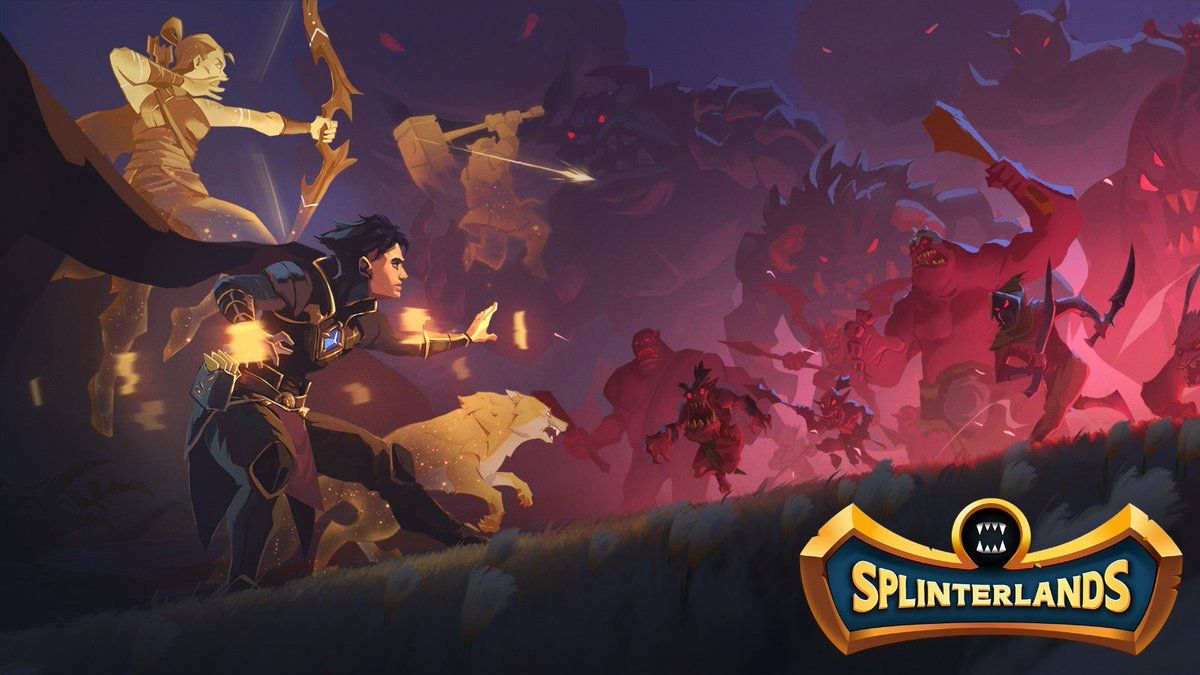 )
)Welcome to another post here in the community.
This week's community challenge in Splinterlands is Ruleset Rumble, and I chose to focus on one of the rules I like the most (and also demands a lot of attention), which is the feared and powerful Equal Opportunity.
For those who don't remember, in this rule all units gain the Opportunity ability, which makes them automatically attack the enemy with the lowest health, regardless of position. In other words, there's no point in hiding a fragile card in the back thinking it'll be safe here any creature with low health becomes an immediate target.
 |
All monsters will attack from any position (range monsters cannot attack from position 1) and will target the enemy Monster with the lowest health |
Because of that, this rule completely changes the way I build my team. Instead of worrying about traditional positioning (tank in front, support in the middle, ranged in the back), I start thinking about direct damage and quick elimination. In this scenario, creatures with magic attacks become my main choice. Unlike melee or ranged attacks, magic attack completely ignores armor, going straight for the opponent’s health. This is crucial in matches where players try to protect units with shields or defensive buffs.
Magic attack ignores armor.
When everyone is trying to protect themselves with shields or by placing high HP creatures in front, magic attack comes into play targeting the weakest and dealing precise damage. And since everyone is focusing on low health creatures, this type of attack tends to clear the battlefield quickly.
Another key point in my strategy is to include cards with Life Leech.
This type of creature starts with a decent magic attack and gains life as it deals damage. With Opportunity in play, it can hit several fragile creatures, gain health quickly, and become a true monster on the field. There were matches where I started with a creature with 3 health and it ended with more than 12 just by draining weaker enemies.
This kind of scaling can turn a common card into an unstoppable threat throughout the match.
| https://images.hive.blog/80x250/https://files.peakd.com/file/peakd-hive/alienpunklord/23wMTrWFdg5vL2aifj1FwPrF3qEbkhXN59mhxVdHbsD76TqRs1YMcQ4zYbBtxSeXXawZ4.png" alt="Image from post"> | Increases health and max health by 50% of damage dealt (rounded up). |
Additionally, whenever possible, I include a card with Taunt. This ability forces enemies to focus their attacks on that creature, taking some pressure off my more fragile units. With that, I can buy valuable time so my Life Leech and magic attack cards can do the dirty work. It's interesting how this ability can completely break the focus of the Opportunity rule, as it redirects attacks to a single target, often well-prepared to take a beating.
The combination I like to use the most is:
- Tank with Taunt to attract the opponent’s attacks (sometimes even with Void or Shield to last longer).
- Behind it, at least two creatures with Magic Attack + Life Leech.
 |
Draws the attacks of enemy units. Does not affect Reach, Scattershot, Wingbreak, or enemy units in the first position. |
This formation has given me many victories, especially in medium to high mana matches. In low mana battles, I get more selective and look for cheaper magic creatures, like Venari Bonesmith or Life Sapper, which are great examples for this rule. Mana economy becomes crucial in this scenario, and lower-cost cards with efficient abilities make all the difference.
One important detail is to avoid creatures with low health that are easy targets. Sometimes placing a very weak card just hands the first kill to the opponent, which can trigger a chain reaction and end in defeat. I'm always careful to ensure my starting lineup doesn't make that kind of opening mistake.
Key creatures
 )
)Death element summoner, has two skill options: remove -2 life from the opponent, or add the ability to reflect additional attacks like Thorns, Blast, and others. It has a 5 mana cost, so it can be used quite often in medium to high battles. The passive ability applied right at the start can destabilize lineups that rely on low-HP cards.
 )
)I usually use it in the front line, it has great armor and health attributes. Although its melee attack is only 1 point. With a 6 mana cost it seems quite acceptable for what it delivers during battle. I might swap it out in situations where I could add a creature with more armor or one that has Void Armor, depending on the opponent's composition.
 )
)SHADOWFEY SHEIK has all the attributes I mentioned earlier. Magic creature with Life Leech ability. In addition to its great max health and speed, it also has a medium cost similar to the ones above. Can we say it's a variation of 1 up or 1 down? Maybe so. But what really makes it stand out is how it fits perfectly into the rhythm of the battle with Equal Opportunity. When it enters the field, it rarely leaves usually because it won.
 )
)And my current favorite.
The legendary LITTLE SISTER. Unfortunately, I couldn’t add the card image with its attributes. Also with a 6 mana cost, this legendary has the Life Leech ability, 3 max health and 2 speed. Also remember it’s a magic attacker with 1 point. Over the long term, it’s one of the fastest-scaling cards, especially in battles where the enemy has several low-HP creatures which is common in this type of ruleset.
 )
)Overall, the Equal Opportunity rule is an invitation for experienced players to explore the game in a more aggressive and strategic way. And honestly? It’s one of the most fun modes to play, because it requires quick adaptation, field reading, and knowledge of card abilities.
This type of match tends to be dynamic and unpredictable. A wrong decision in positioning or ability type can be fatal. I’ve lost games by placing a support card that was too fragile and saw the opponent gain an advantage by the second turn. On the other hand, when everything clicks, it’s a great feeling to see your team melt the enemy step by step.
 )
)
Comments (2)
Thanks for sharing! - @lenonmc21